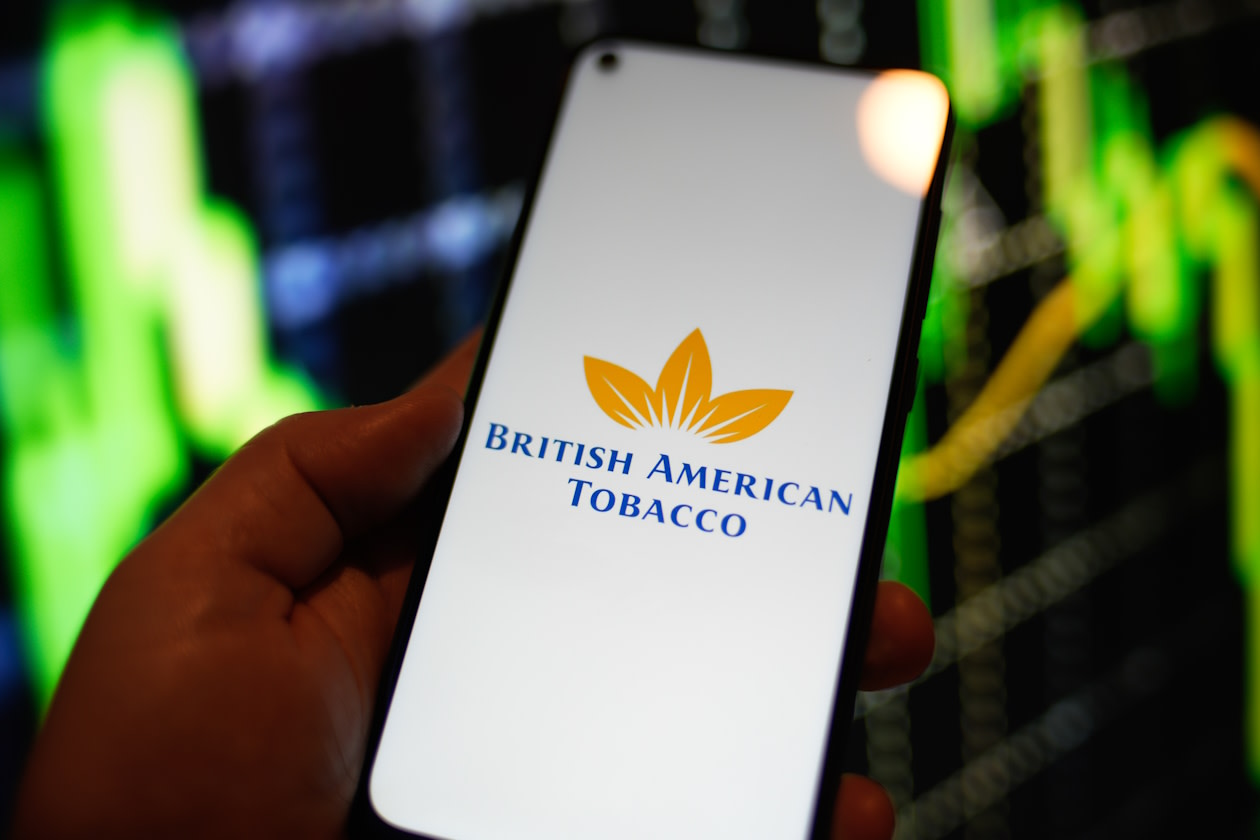British American Tobacco’s revenue in the first half looks set to land a little better than management had expected. Annual sales growth guidance has been upgraded from around 1% to 1-2%.
BATS saw a return to revenue growth in the US combustibles market helped by robust pricing so far this year. First half low single-digit revenue growth for New Categories is expected to improve to mid-single digit for the full-year.
Underlying operating profit growth guidance for 2025 is unchanged at 1.5-2.5%.
The company also recently sold around £1bn of its stake in India’s ITC. That’s enabled a £0.2bn increase in the 2025 share buyback programme to £1.1bn. BATS’ remaining stake in ITC is worth around £10.4bn at current market prices.
The group has committed to bringing debt levels back down to the target range of 2.0-2.5x underlying cash profit (EBITDA) by the end of 2026.
The shares were flat in early trading.
Our view
British American Tobacco’s small revenue upgrade for 2025 wasn’t enough to lift either profit guidance or investors’ spirits.
In traditional combustible markets, the group is facing a shrinking market and continued regulatory pressure. However, a renewed commercial focus is starting to bear fruit in the key US division, supported by robust pricing. We do have some concerns around the sustainability of that trend if the American economy deteriorates.
The group was early to recognise changes in consumer behaviour and is increasingly pinning its hopes for the future on its portfolio of 'smokeless' products, namely vapes, heated tobacco and oral pouches. We're impressed by the progress made so far. The so called ‘New Categories’ are finally contributing to the bottom line, albeit in a small way.
But competition from illegal single-use vapes in North America is proving to be a drag. That’s kept a lid on New Category growth in the first half of the year. Things are expected to improve, but that depends on a good response to new product development. Hopes rest on brands such as Velo, which is gaining share of the fast-growing modern oral tobacco category.
There is some evidence to suggest that these products pose a reduced health risk compared to cigarettes, but they are coming under increasing scrutiny with a ban on single-use vapes now in force in the UK. The Trump administration could see the products in a more favourable light. But there’s considerable resistance to lifting restrictions on flavoured vapes in the US.
It's too early to call how the long-term profitability of these products will compare to traditional products. This could undermine BATS' attractive operating margins, which have remained over 40% despite recent market challenges and the spike in inflation.
Consistently high cash flows do mean that the company is well placed to make the investments necessary to keep pivoting away from cigarettes. That also supports a dividend yield of around 7.4%. The group also remains committed to ‘sustainable’ share buybacks.
But with net debt levels still looking stretched, there may be limited scope to increase shareholder pay-outs in the immediate future. There can never be any guarantees.
The group’s strong position in developing modern alternatives for nicotine users gives us some confidence that medium-term growth of 3-5% for revenue and 4-6% for underlying operating profit is achievable. But BATS’s valuation has made a significant recovery back towards its long-term average, adding extra pressure for sales and profits to pick up the pace.
Environmental, social and governance (ESG) risk
The food and beverage industry tends to be medium-risk in terms of ESG though some segments like agriculture, tobacco and spirits fall into the high-risk category. Product governance is a key risk industry wide especially in areas with strict quality and safety requirements. Labour relations and supply chain management are also industry wide risks, with other issues varying by sub-sector.
According to Sustainalytics, BATS' overall management of ESG issues is strong. But we do have some concerns. Recent controversies include accusations of using corporate social responsibility activities to influence government officials and bypass tobacco policies. With tobacco being on the exclusion list of certain institutional investors, product impact is key and the company's commitment to public health.
British American Tobacco key facts
All ratios are sourced from LSEG Datastream, based on previous day’s closing values. Please remember yields are variable and not a reliable indicator of future income. Keep in mind key figures shouldn’t be looked at on their own – it’s important to understand the big picture.
This article is not advice or a recommendation to buy, sell or hold any investment.No view is given on the present or future value or price of any investment, and investors should form their own view on any proposed investment.This article has not been prepared in accordance with legal requirements designed to promote the independence of investment research and is considered a marketing communication.Non - independent research is not subject to FCA rules prohibiting dealing ahead of research, however HL has put controls in place(including dealing restrictions, physical and information barriers) to manage potential conflicts of interest presented by such dealing.Please see our full non - independent research disclosure for more information.


